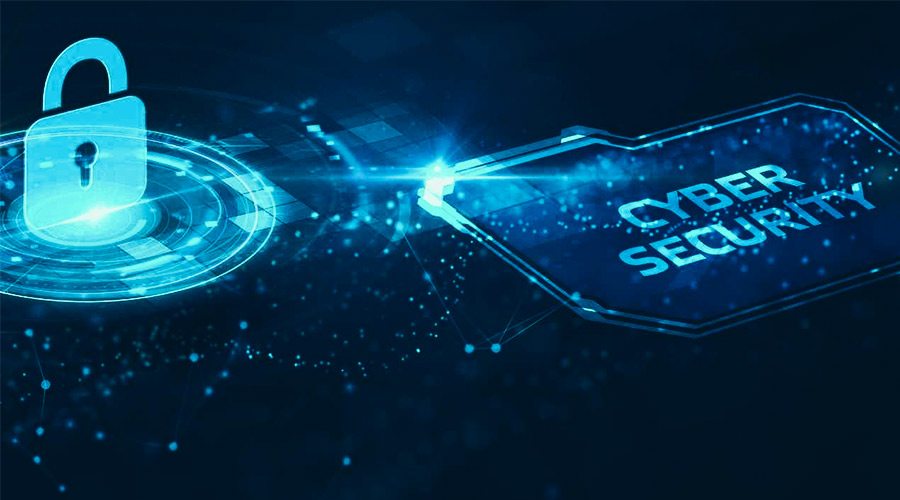As we know, cybersecurity threats are constantly increasing, which is a big concern for individuals, businesses, and organizations. No matter if you are a small business owner or part of a large organization, it’s essential to defend your online data and digital assets from cyber fraud.
But do not be worried if you have strong cyber threat detection systems in place that help to defend against them. Here are a few tactics and techniques to save yourself from cybercriminals including a strong password, installing anti-viruses and firewall protections, and safely backing up original data. Let’s take a look at this blog where you will learn about types of cybersecurity attacks, steps to deal with cybersecurity, and how you can help stay safe online.
What is Cybersecurity?
Cybersecurity experts protect your devices (phone, laptop, computer), networks, and data from unauthorized users or cyber criminals. Cyber intelligence experts like Sky Recoup use a variety of technologies, processes, and techniques which are designed to protect your online sensitive information. With the use of cybersecurity techniques, our cyber security experts make sure your digital resources are safe and sound and company confidential information remains private, secure, and available whenever you need it.
There is no question that you are constantly under various types of cyber threats whether you are using a smartphone, laptop, computer or smart TV. Cybersecurity acts like a digital shield that protects you from those dangers.
What are Common Types of Cybersecurity Attacks?
In the realm of Cybersecurity, there are countless ways for hackers and cybercriminals who try to invade your cyber systems. Here are some of the most common and dangerous types of cybersecurity attacks:
Phishing Attacks
Phishing is one of the oldest types of cybersecurity threats where attackers use email, SMS, phone, social media, and social engineering techniques to allure a victim to share sensitive information. In sensitive information you can include passwords or account numbers, credit card numbers, or social security numbers and more.
How to defend against phishing:
- Don’t ever click on suspicious links or download unknown attachments.
- Use email filters and spam detectors
- Verify the sender’s email address carefully.
- Educate employees or family members about recognizing phishing signs.
Ransomware Attacks
Ransomware is a type of malware that locks or encrypts your files and demands a ransom to unlock them. Malware is the most common type of cyberattack, mostly because this term encompasses many subsets such as ransomware, trojans, spyware, viruses, worms, keyloggers, bots, cryptojacking, and any other type of malware attack that leverages software in a malicious way.
How to defend against ransomware:
- Update your software and operating systems timely.
- Always create a backup of your sensitive data regularly.
- Use advanced anti-malware tools.
- Don’t click on unknown suspicious links.
Denial-of-Service (DoS) Attacks
A Denial-of-Service (DoS) attack is like when someone intentionally sends countless fake requests which cause disruptions in business activities. Users are unable to perform routine and necessary tasks, such as accessing email, websites, online accounts or other resources that are operated by a compromised computer or network.
How to defend against DoS:
- Use firewalls and intrusion detection systems.
- Employ rate limiting to control traffic flow.
- Partner with a DDoS protection service.
- Monitor your network traffic regularly for unusual patterns.
Man-in-the-Middle (MitM) Attacks
MitM attacks is a type of cyberattack where an attacker secretly intercepts the communication between two parties. Those attackers pretend to be one of them to steal data or manipulate the conversation.
How to defend against MitM:
- Don’t use public Wi-Fi for sensitive transactions.
- Use VPNs (Virtual Private Networks) to secure your network.
- Make sure your websites must use HTTPS encryption.
- Keep your devices updated with security patches.
SQL Injection
This attack targets web applications by inserting malicious SQL queries into input fields, allowing attackers to manipulate databases and gain access to sensitive data.
How to defend against SQL Injection:
- Use parameterized queries and prepared statements.
- Validate and sanitize user inputs.
- Regularly update and patch web applications.
- Conduct regular vulnerability scans.
What are Types of Cybersecurity?

- Critical Infrastructure Security: Helps to protect the computer systems organization which needs to stay operational.
- Network Security: Protecting the integrity of your network and data during transmission.
- Endpoint Security:Main focus is securing end-user devices like mobile phones and laptops.
- Application Security: Here the main focus is to make sure software and applications are updated and protect you from threats.
- Information Security: Make sure that your data is safe from unauthorized access or alterations.
- Cloud Security: Protect cloud apps and infrastructure, ensuring data privacy and security during transmission between various internet-based applications.
- Mobile Security: Mobile security protects devices from cyber attacks and safeguard sensitive data. Also prevents cybercriminals from exploiting identity theft and other malicious attacks.
What are Types of Cybersecurity Solutions ?
To protect against cyber threats, businesses and individuals rely on several types of cybersecurity solutions. Check here effective ones are mentioned below:
- Antivirus and Anti-malware Software: These are the most basic solutions that protect against common threats like viruses, worms, and trojans. Make sure they are updated frequently to stay effective.
- Firewalls: Firewalls act as a barrier between your trusted internal network and untrusted external networks. They monitor incoming and outgoing traffic and can block malicious access.
- Encryption Tools: Encryption secures your data by converting it into unreadable text that can only be decrypted with a key. This is especially useful for protecting sensitive files and communications.
- Multi-Factor Authentication (MFA): MFA adds an extra layer of security by requiring multiple forms of verification before access is granted, making it harder for hackers to break in.
- Virtual Private Networks: VPNs encrypt your internet connection and hide your IP address, protecting your online activity from eavesdroppers, especially on public networks.
What are the Methods to Protect Your Online Data from Cyberattacks?
- Use Strong Passwords to protect confidential information
- Regular Backups to keep valuable information
- Software Updates
- Aware Employee against cybersecurity attacks
- Access Control to authentic employees
Conclusion
Cybersecurity is no longer optional; it’s a necessity for every organization. With the rise of digital communication, cloud computing, and remote work, the threat of cyber fraud gives headaches to organizations and individuals. But Sky Recoup is leading experts against cyber threats, which helps to reduce your risk of cyber attacks. The threat landscape is always evolving so it’s important to make a stronger security strategy. Invest in a multi-layered protection approach to prepare yourself which helps to mitigate risks before they escalate into major incidents.








